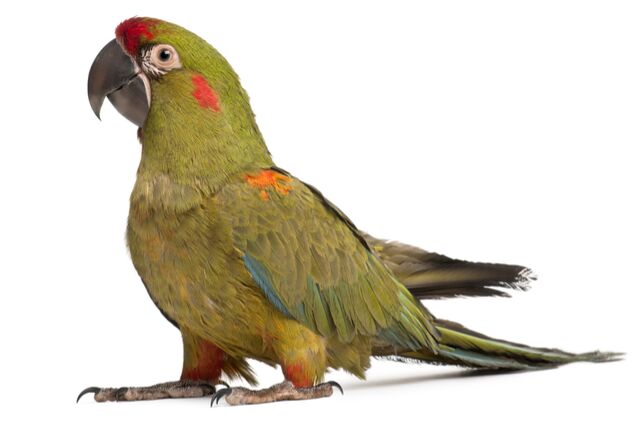Red Fronted Macaw


About Red Fronted Macaw
One of the so-called “mini macaws,” the Red fronted macaw is a unique, affectionate and endlessly fun parrot, and truth be told, not at all that “mini.” They can be quite calm and affectionate, being one of the cuddlier breeds of the macaw. On the other hand, these parrots are very intelligent and have an inquisitive personality with a good desire for fun and goofing off. All these balanced traits combined make the Red Fronted macaws a desirable and loved pet parrot worldwide.
With a great blend of cuddliness and goofiness, these macaws have all it takes to be perfect pet parrots.
Native Region/Natural Habitat
These parrots are found living in a very small, almost tiny geographical region in the center of Bolivia. This is a small, mountainous region between the towns of Santa Cruz and Cochabamba, where these macaws live in an arid, semi-desert environment. Due to the small native habitat, the rapid urbanization and agriculture, and excess killing by the local farmers, the Red Fronted macaw has become an endangered species in the wild. Luckily, in captivity, it is widespread and common as a pet bird.
While considered one of the smaller of the macaws, they are still large, with an average length of 22 to 24 inches (55 to 60 centimeters). Just like their cousins, a good part of this length is taken by their graceful and long tails. All of this requires a lot of space when considering a cage. But like all large parrots, they will be happiest and healthiest when moving freely about the house.
There’s a little bit of everything when it comes to Red fronted macaws. They can learn a couple of basic words to repeat from an early age, and will also try and mimic human conversations. Their call consists of loud caws and screeches, but it is not often you will hear it. It comes on mostly when something is wrong, or your pet is neglected and lonesome. To keep this level of noise at the minimum, provide a lot of interaction and make sure your pet has all it needs.
Most macaws are full of striking colors and magnificent patterns. These macaws, on the other hand, are much simpler in color, but still beautiful and unique nonetheless. The body is mostly colored in lush, tropical green. A large, red patch on the forehead gives them their name and their most distinguishing detail. It is combined with red, “blushing” spots on the cheeks, a fiery orange-red pattern on the very top of the wings and magnificent blue on the largest flight feathers. These toned down and perfectly combined colors really make a beautiful macaw.
A lot of subtle little details and simple, toned down colors make the Red Fronted macaw beautiful.
In the wild, their diet is made up of a variety of fruits, nuts, seeds and agricultural crops. The first part of their diet as a pet should be the commercial seed mix for macaws. It has a good portion of millet, sunflower, and other seeds. As an important addition of vitamins and proteins, you’ll have to add plenty of fresh fruits and green vegetables. A cuttlebone is an excellent choice for added calcium and a chance for your pet to blunt their powerful beak.
Red Fronted macaws are one of the hardiest in their family. They are praised for their ability to adapt quickly and their robust health. Just make sure the conditions are optimal – no draft, no cold temperatures or extreme heat. Provide a lot of sunlight and a lot of room to move freely. Regular baths are a great way to keep up good hygiene and prevent any diseases. Plus, these macaws love bathing and goofing around in the shower!
The best way to prevent illness is to keep them in optimal living conditions and provide proper care and hygiene.
Affectionate, docile, inquisitive and playful, these macaws have all the desirable traits you would want in a pet parrot. Paired with their excellent health and a lifespan of up to 50 years, these aspects make the Red fronted macaw a great family pet. Make sure you don’t neglect their need for social interaction and play. Whether it is cuddling or goofing around the house, you will need to leave some time for your pet as well.
Photo credit: Eric Isselee/Shutterstock; Lev Levin/Shutterstock

A proud mama to seven dogs and ten cats, Angela spends her days writing for her fellow pet parents and pampering her furballs, all of whom are rescues. When she's not gushing over her adorable cats or playing with her dogs, she can be found curled up with a good fantasy book.
More by Angela Vuckovic

























